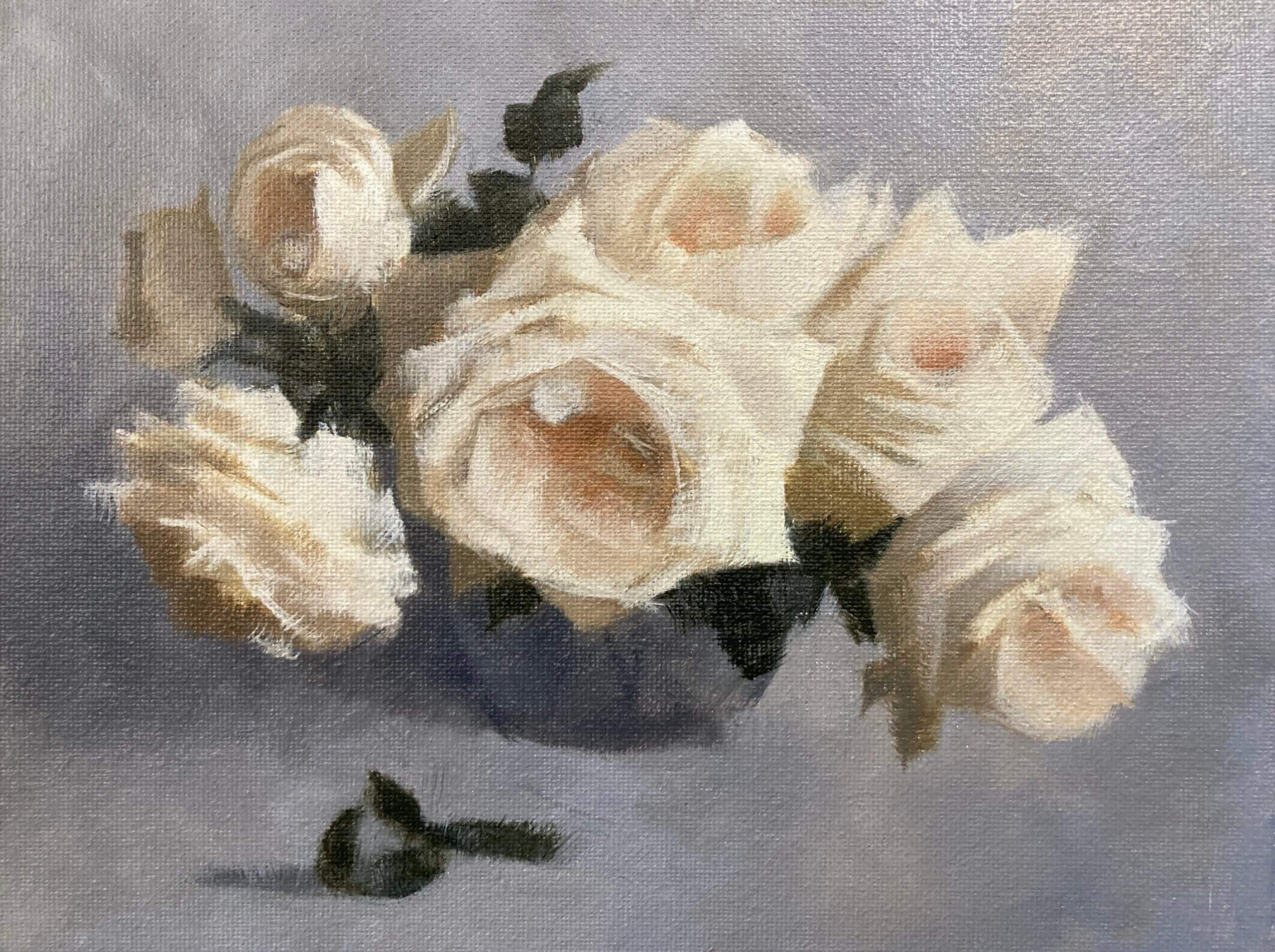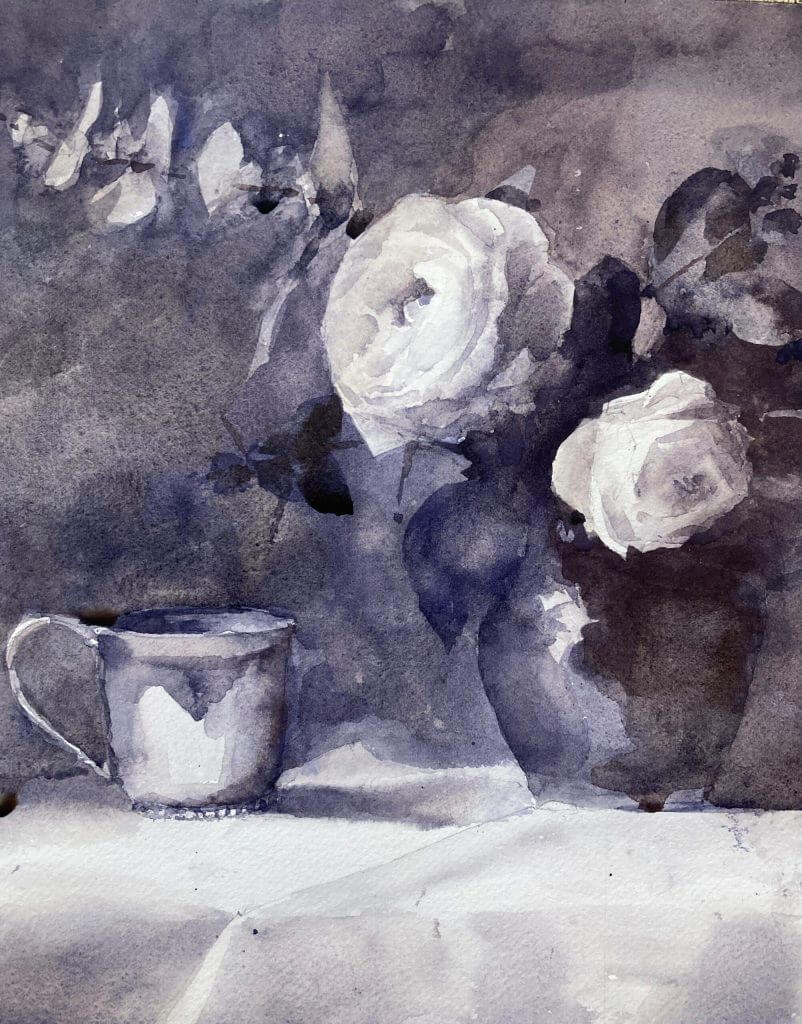Kathy Speranza roses are spectacular and I was watching her online rose course yesterday and thought I’d have a go. She makes it look so easy! And boy can she paint. I’ve done a number of flower paintings with Paul Foxton but it’s always good to see how others approach things.
Pass 1 on Kathy Speranza Roses
Above is the result of the first pass. It’s oil on a 9″x12″ canvas board. I have to admit that I’m not doing her exact method. She does an underpainting first and a number of preliminary drawings but I thought I’d have a go at the block in to see what happened. Pretty happy so far.
Pass 2 – Refining the Color and Form

Pass 2 on the Kathy Speranza rose workshop. This is lesson 6 and the second pass putting on color. I’m finding this tricky but slowly getting into the slow pace of things. Usually I would be finishing up by now but I think there are a few more steps to go. Each with a week’s drying in between so we’re in for the long haul. This one was refining the background, values and edges. I also introduced some more chroma into the centers. A very little paint goes a long way with this method and I’m starting to enjoy it very much.
Next Steps – Pass Three on Kathy Speranza Roses
I still need to finish this painting. I’m a bit nervous – don’t want to ruin it. I’ve watched her final video and it gets pretty philosophical. Interesting though and makes a change from more practical approaches. Both are needed of course and it’s been really worthwhile looking at flowers from a different perspective.
















